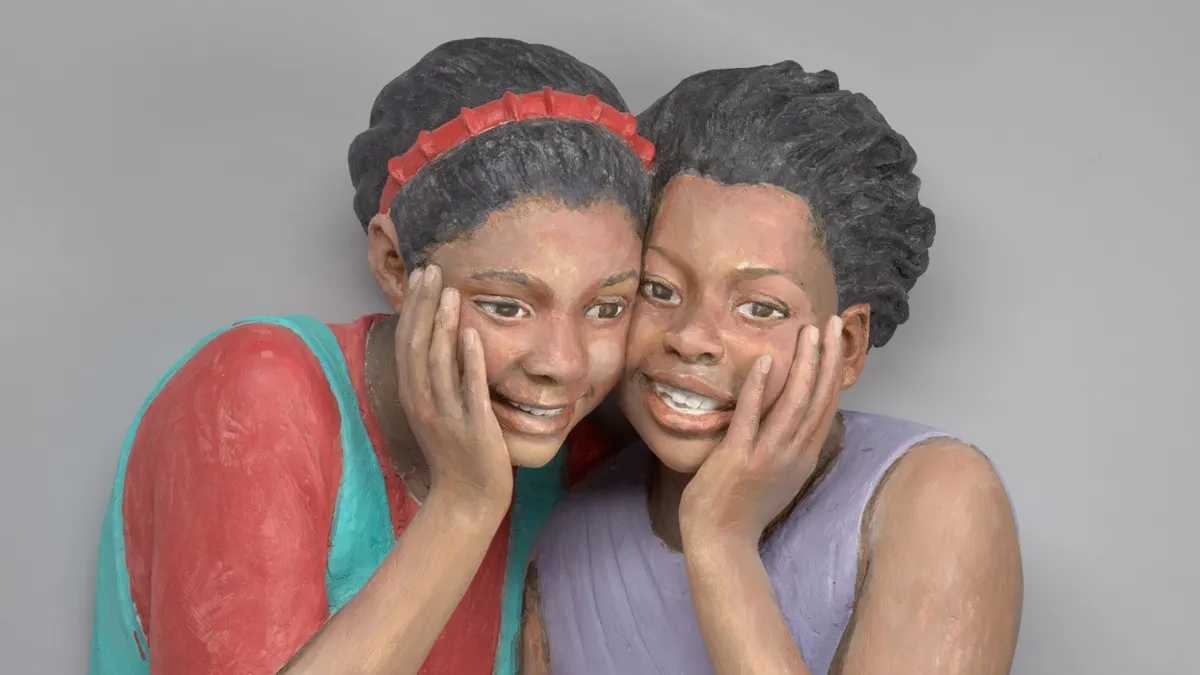
On any given day, visitors can explore a myriad of exhibitions at the Smithsonian museums, but one recent display has garnered significant attention due to a White House executive order. The Shape of Power: Stories of Race and Sculpture at the Smithsonian American Art Museum showcases an impressive collection of 82 artworks by 70 artists, spanning nearly three centuries, from the late 1700s to the present day. This exhibition delves into the historical context of various sculptures, offering new perspectives on their meanings while contemporary pieces reflect on pressing current issues.
While the executive order critiques the exhibition for allegedly promoting a divisive, race-centered ideology, many visitors and critics view it as an important exploration of historical representation, stereotypes, and identity. In this article, we will examine three notable works featured in the exhibition that illuminate American perceptions of race throughout history.
One of the standout pieces is the Pioneer Woman, a statue created to celebrate the women who ventured westward alongside their husbands during the land rushes of the late 19th century. Commissioned in the 1920s by oil businessman E. W. Marland, the statue was intended to honor these women’s contributions to the American frontier. Marland expressed his hope that this monument would preserve the legacy of their "fight and toil and courage" for future generations.
The winning design by sculptor Bryant Baker was unveiled in a grand ceremony in Ponca City, Oklahoma, in 1930. The event included a pageant commemorating the land runs of 1889 and 1893, during which tens of thousands of white settlers claimed land previously designated for Native American tribes after their forced removal. According to the exhibition catalogue, Baker's statue of a resolute white woman reinforces the ideology of manifest destiny, which asserted that the land now known as the United States was divinely ordained for white Christians.
Although Smithsonian curators were unavailable for comment, the catalogue draws upon research from Cynthia Prescott, author of Pioneer Mother Monuments. Prescott explains that the exhibition aims to unpack the complex racial meanings embedded in this artwork and reveal them to the audience. She believes that this exploration challenges the narrative pushed by the executive order. The White House has not responded to requests for comment regarding this matter.
Another compelling piece in the exhibition is by artist Roberto Lugo, a Puerto Rican who grew up in a low-income neighborhood in Philadelphia. His sculpture, DNA Study Revisited, is a vibrant life-sized self-portrait created from a mold of his body at a time when he weighed 100 pounds more. Lugo reflects on the challenges of growing up in food deserts, where unhealthy food options contributed to widespread obesity.
Lugo articulates the power of art to foster vulnerability and connection among individuals from diverse backgrounds. He believes that art transcends verbal communication, enabling people to engage with one another, regardless of their political beliefs. He emphasizes the importance of connecting with others, including those who may feel disenfranchised, stating that many Trump supporters also experience a lack of opportunity due to their race. He sees this shared sense of disenfranchisement as a potential foundation for greater understanding and connection.
Visitor Jilian Vallade, who is Black, was particularly moved by the sculpture Girl Skating, created in 1906 by Abastenia St. Leger Eberle. Eberle was celebrated for her depictions of impoverished immigrants in her lower Manhattan neighborhood. The sculpture captures a girl joyfully gliding on a roller skate, embodying both delight and fear. The exhibition highlights the historical context in which Italian, Eastern European, and Jewish immigrants were often excluded from the category of "white."
Vallade expressed her surprise at learning that white individuals had also experienced a sense of "othering." She found the works in The Shape of Power to be revealing and an invaluable opportunity to examine her own biases while gaining a broader perspective.
The Shape of Power will be on display at the Smithsonian American Art Museum through mid-September, offering visitors a chance to engage with these significant themes surrounding race, representation, and identity in American art.
This exhibition not only challenges preconceived notions but also invites dialogue about the complex histories that shape our understanding of race and culture in America today.